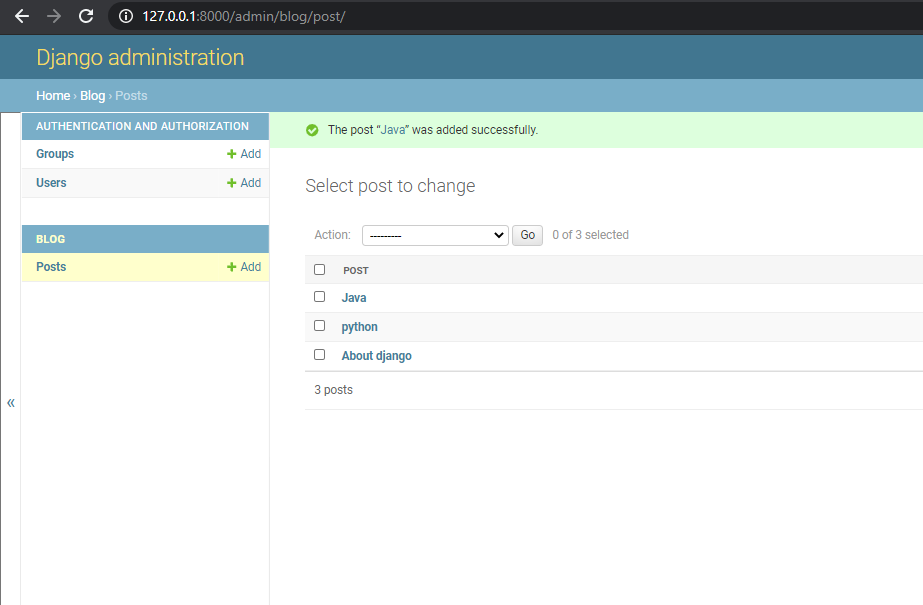How to use User model in Django?
Last Updated :
22 Nov, 2022
The Django’s built-in authentication system is great. For the most part we can use it out-of-the-box, saving a lot of development and testing effort. It fits most of the use cases and is very safe. But sometimes we need to do some fine adjustment so to fit our Web application. Commonly we want to store a few more data related to our User but the next question might be that how should a Django developer reference a User? The official Django docs list three separate ways:
- User
- AUTH_USER_MODEL
- get_user_model()
Explanation:
Illustration of how to reference user model by an example. Consider a project named mysite having an app name blog.
Refer to the following article to check how to create a project and an app in Django.
How to Create Basic Project using MVT in Django ?
How to Create an App in Django?
Method 1 – User model Directly :
Inside the models.py add the following code:
Python3
from django.db import models
from django.contrib.auth.models import User
class Post(models.Model):
author = models.ForeignKey(User, on_delete=models.CASCADE)
title = models.CharField(max_length=50)
content= models.TextField()
def __str__(self):
return self.title
|
Register this model by adding the following code inside the admin.py.
from django.contrib import admin
from .models import Post
# Register your models here.
admin.site.register(Post)
Some kinds of projects may have authentication requirements for which Django’s built-in User model is not always appropriate. For instance, on some sites it makes more sense to use an email address as your identification token instead of a username.
Django allows you to override the default user model by providing a value for the AUTH_USER_MODEL setting that references a custom model.
Method 2 – AUTH_USER_MODEL :
AUTH_USER_MODEL is the recommended approach when referring to a user model in a models.py file.
For this you need to create custom User Model by either subclassing AbstractUser or AbstractBaseUser.
- AbstractUser: Use this option if you are happy with the existing fields on the User model and just want to remove the username field.
- AbstractBaseUser: Use this option if you want to start from scratch by creating your own, completely new User model.
Refer Below Article for Creating Custom User model:
Creating Custom User Model
If you’ve already created a custom user model say CustomUser in an app called users , you’d reference it in your settings.py file as follows:
#settings.py
AUTH_USER_MODEL = 'users.CustomUser'
Then in blog models.py add the following code:
Python3
from django.conf import settings
from django.db import models
class Post(models.Model):
author = models.ForeignKey(settings.AUTH_USER_MODEL,on_delete=models.CASCADE)
title = models.CharField(max_length=50)
content = models.TextField()
|
Register this model by adding the following code inside the admin.py.
from django.contrib import admin
from .models import Post
# Register your models here.
admin.site.register(Post)
Method 3 – get_user_model() :
If you reference User directly (for example, by referring to it in a foreign key), your code will not work in projects where the AUTH_USER_MODEL setting has been changed to a different user model.
The other way to reference the user model is via get_user_model which returns the currently active user model: either a custom user model specified in AUTH_USER_MODEL or else the default built-in User.
Inside the models.py add the following code:
Python3
from django.db import models
from django.contrib.auth import get_user_model
User=get_user_model()
class Post(models.Model):
author = models.ForeignKey(User, on_delete=models.CASCADE)
title = models.CharField(max_length=50)
content= models.TextField()
def __str__(self):
return self.title
|
Register this model by adding the following code inside the admin.py.
from django.contrib import admin
from .models import Post
# Register your models here.
admin.site.register(Post)
Output –

Creating instances with author as user
Like Article
Suggest improvement
Share your thoughts in the comments
Please Login to comment...